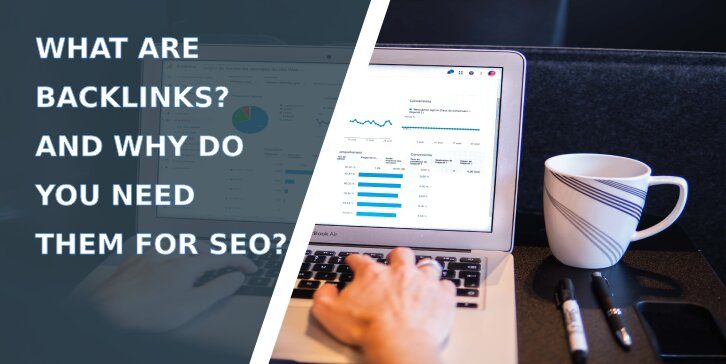Backlinks are crucial ranking factors for search engine optimization (SEO). In general, backlinks are links on websites different from your own that redirect back to a page on your site. Backlinks are also known as inbound links since they represent another site’s traffic arriving at your website.

Managing, implementing, and analyzing how your backlinks perform is essential for SEO strategy. The quantity and quality of the backlinks help your site rank higher in the search engine page results, like Google, DuckDuckGo, Bing, etc. Backlinks indicate how renowned or popular a website is with visitors if you prefer.
Keep in mind that on-page optimization is about creating content that helps search engines better understand what a website’s about. On the contrary, off-page optimization demonstrates to search engines that your content is valuable to users and third parties. And one of the most important things, if not the most important, backlinks define a website’s value since they can increase or decrease domain authority.
Is a Backlink the Same as a Hyperlink?
Links are essentially a form of digital glue that holds the Web together and connects each page to another. Internal hyperlinks are links connecting pages on the same domain, and they exist to assist users when navigating a website. External links, as expected, connect to external pages, that is, web pages on different domains, and serve the following functions:
● Cite a source
● Offer recommendations
● Provide extra content to the reader
● Add authenticity and integrity
● Support a claim the writer made in an article
In every case, links are there to provide value to readers. Hence the outgoing hyperlink is a really valuable asset. In fact, it’s paramount to understand that the hyperlink has a specific direction. For example, when it’s outgoing on an external website, it comes to a target page. So, this is the backlink to the target page.
What’s more, search engines can recognize that a backlink has value and actually reward the target website (URL) because they interpret the link as intentional. In other words, search engines assume there has been some form of editing and editorial assessment.
 Therefore, the backlinks that lead back to your website indicate that your copy is valuable and can help answer web users’ search queries. Undoubtedly, then, backlinks are a super decisive SEO ranking factor. And, when it comes to organic traffic, they play a vital role in the success or failure of websites.
Therefore, the backlinks that lead back to your website indicate that your copy is valuable and can help answer web users’ search queries. Undoubtedly, then, backlinks are a super decisive SEO ranking factor. And, when it comes to organic traffic, they play a vital role in the success or failure of websites.
What Is Backlink Authority? How Can You Determine It?
Google understood the importance and concept of backlinks when it launched in 1998. This understanding helped it become the dominant search engine. Google used a revolutionary algorithm that ranked web pages based on hyperlink popularity. A page, for example, ranks higher if more links direct to it.

This algorithm is known as “PageRank” and doesn’t only calculate the number of links a webpage receives but also measures the authority of said links.
What that means is that not all backlinks are considered equal. To understand this better, consider the following:
A page of your website has a backlink from two other pages from different domains. Page A has 400 backlinks, while Page B has only 40 backlinks. If these pages have similar content or are on the same topic, Page A will rank higher than Page B. Consequently; Page A is more authoritative because it has ten times more links. Similarly, Page A’s backlink has greater value than Page B’s link since it has higher authority.
Basically, Google’s algorithm assigns authority value to every web page based on the quality and quantity of its incoming hyperlinks.
So, What Is Domain Authority?
Domain authority refers to a network of hyperlinks and URLs on your website. Like with backlinks from external websites, internal links within your site are also checked by authorities.
A link from ABC News is valuable because ABC News is one of the world’s most authoritative websites. Consequently, hyperlinking to high-authority and big brand websites seems sensible if you want to boost your site’s traffic and reach. If you choose to use links from websites with low domain authority, you risk being marked down for SEO, meaning that your website won’t be seen as trustworthy.
Suppose your homepage (the page that users typically land when arriving at your site) gets some backlinks from local websites. In that case, this boosts your site’s authority within that specific geographical region. But, considering it also hyperlinks out to different pages within your site, a portion of the authority goes to other pages linked to your homepage. This authority boost is also shared between the pages that they link to. Therefore, incoming backlinks from external websites boost all of your site’s internal links.
That’s why large brands have dominated the market for so long regarding search terms. Their high domain authority and smart backlinking, and internal linking practices guarantee that even their newly written and published content will also rank high.
Is Quantity or Quality More Important When it Comes to Backlinks?
The truth is that both quantity and quality are essential for PageRank. In fact, accurately computing the exact value a hyperlink adds to your website is complex and very challenging. Yet, the following are the basic rules:
- The number of backlinks is crucial. You need to have as many as possible.
- It’s immensely better to have backlinks from high-authority sites. Attracting backlinks positively affects your whole website.
When it comes to backlinks, you need both quality and quantity.
Relevance, Relevance, Relevance!
Another important factor regarding backlinks is relevance. Except for calculating whether a backlink has high authority, Google also checks whether a said link is relevant to your type of produced content. For instance, Google will check if the topic of the backlink is similar to your page’s content or if your website, as a whole, matches the topic of the hyperlink.
Consider this: Say you have a website that sells sports apparel, and you have a page that sells NFL hoodies hyperlinked to two different sites:
Link 1
- The website is a popular NFL news outlet.
- The web page contains a link to NFL hoodies.
- The anchor text is “Click here to read more.”
The anchor doesn’t offer relevance signals. Yet the page and the website do, meaning this is a relevant link.
Link 2
- The website is a popular NBA news outlet.
- The web page contains a link about basketball techniques.
- The anchor text is “How to Shoot Better.”
Unfortunately, contrary to Link 1, Link 2 doesn’t offer any relevant signals. It’s irrelevant to the content of your website (even if both sites are about sports) that Google might even mark you down for it, despite being an authoritative site.
Link 3
- The website is not that popular when it comes to NFL news.
- The web page contains the link about NFL helmets.
- The anchor text is “Best-selling NFL helmets.”
Even if this website is not authoritative, the site itself, the page, and the anchor text are relevant. So, this is a valuable hyperlink as it passes relevance signals.
In the end, you may use backlinks from different websites and sources. Some might be from irrelevant sites, which you would want to avoid, or sites on par with your offerings and niche. Therefore, links that are more relevant to your website’s content help you the most, as they give a clear signal to Google’s algorithm that your website is solid for a specific topic.
How to Get Backlinks to Your Site
Once you’re done with on-page SEO optimization, working on backlinks is the next step to a successful SEO strategy. If you don’t do so, you won’t see a drastic increase in your website’s rankings.
However, this is a very challenging part of SEO since to get a backlink, you’d have to convince another website that linking to a page on your site will help them improve the ranking of their web page.
![]()
Of course, you can always email random people and hope for a response. Yet, if you’re not into cold emailing, you can use the following effective practices to gain backlinks.
Link Generation
Now, backlink generation takes place in two main ways. First, a web user has discovered your content and chooses to link to you because they consider it valuable (this is where domain authority comes in). Second, you send your content to someone else and let them decide if they want to hyperlink to you.
You have to reach out to people presenting your content in both cases. This can be done in many different ways, as there are nearly countless approaches.
But, what is the most effective one? That depends on the content of your website, your website type, the type of businesses that may hyperlink to you, and how you get them to take a look at your website.
- Partnerships: Partnering with businesses, including local companies such as a San Diego SEO company, can make a difference in link generation. This is because it’ll be far easier to agree to a link exchange. Alternatively, you can do co-activities that promote your websites, such as webinars or podcasts. Collaborating with a reputable SEO company can also enhance your visibility and credibility in the local market.
- Your local community: Helping out your local community is an excellent way to promote your business. Plus, you also give something back to your fellow citizens, which is a gratification on its own. But, how do you do that? You can volunteer at universities or local schools or sponsor events.
- Bloggers: Fostering positive relationships with bloggers specialized in your niche can help you increase your online presence. Write a feature, send samples to bloggers, or interview them for some exposure on their site. They have an established and engaged audience, so if your products or services fall into a similar niche, they’re bound to love them, too. At the same time, do consider social media marketing, as well.
- Charities: Charity work generates goodwill and can put your company into the spotlight. Sure, it might not be the most moral thing to do; however, helping carriers to get backlinks can boost your site’s traffic.
- Press: Getting press is challenging (and might require payment). Yet, it has unlimited potential because journalists always look for cool and positive stories. So, if you have a solid story about your company, your products, or your services, feel free to reach out to news outlets. Also, bear in mind that the press can multiply the reactions to your stories since other outlets re-publish them to their audience.
Link Building
This is the process of actively getting backlinks. It’s a specific SEO category; some call it a niche specialty, and it needs a lot of practice.
Essentially it’s about understanding the value of hyperlinks and participating in activities with the potential to generate quality backlinks. Well, link building makes the web what it is, after all.
Link building is about trial and error. However, everything has to do with the inverse: If you fail to engage in activities that might drive backlinks, you have a slim chance of actually improving your search rankings. Just brace yourself and strive for the best.
Conclusion
Getting backlinks is a cornerstone of SEO, alongside keyword research and on-page optimization. Focusing only on one part but ignoring the others can damage your SEO ranking.
Links aren’t just great for SEO, but they also create brand awareness, drive traffic, and increase conversions. Hence, link building has to be a central part of your SEO strategy.
If you need help in your SEO strategy reaching out to professional SEO optimization and content writing solution can be smart and effective.





Comments are closed.